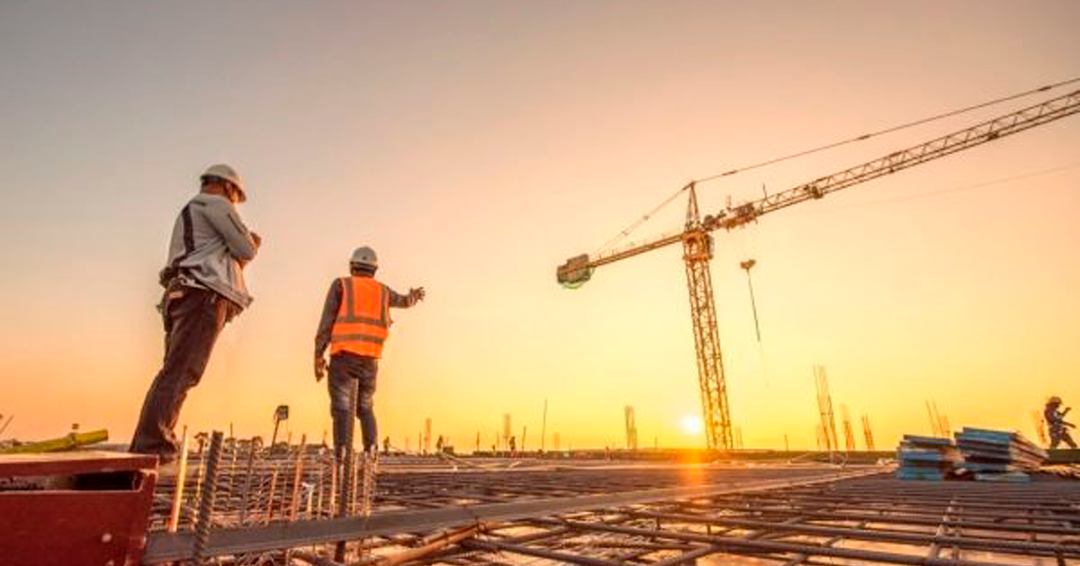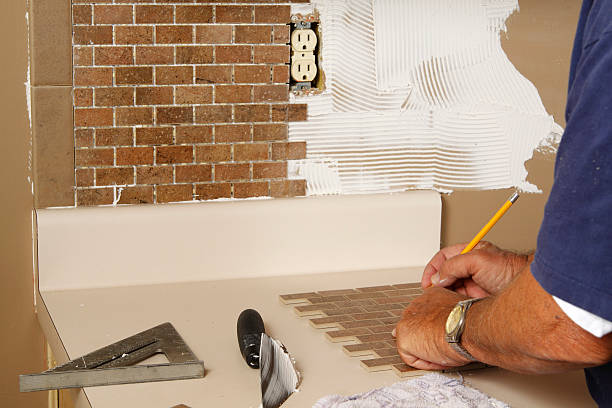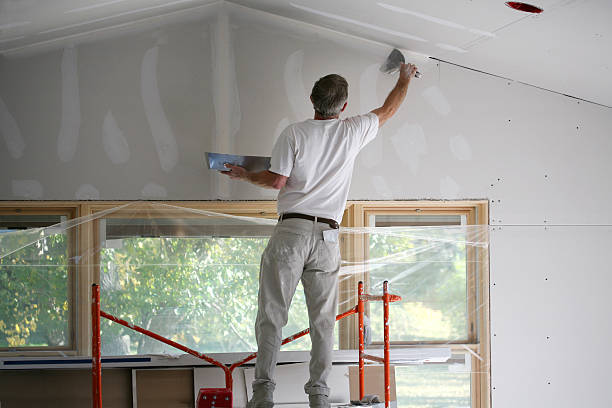Building the Future: Two Strategies for the Construction Industry to Preserve its Relevance
Table of Contents:
- Introduction
- Understanding the Challenges
- Embracing Sustainability and Green Building Practices
- Adopting Advanced Technologies and Digitalization
- Overcoming Challenges and Resistance to Change
- Conclusion
Introduction:

The construction industry has long been a pillar of economic growth and development. However, in the face of evolving societal and environmental challenges, it is imperative for the industry to adapt and preserve its future relevance. To ensure sustainability and meet the needs of a changing world, construction professionals must embrace innovative strategies. In this blog, we will explore two key approaches that can help the construction industry thrive: embracing sustainability and green building practices, and adopting advanced technologies and digitalization. By integrating these strategies, the construction industry can pave the way for a more resilient and prosperous future.
Understanding the Challenges:
Before delving into the strategies for preserving the future of the construction industry, it is crucial to understand the challenges it faces. These challenges arise from various factors, including environmental concerns, resource limitations, changing regulations, and technological advancements. Here are some key challenges that the industry must address:
2.1 Climate Change and Environmental Impact: The construction industry is a significant contributor to environmental degradation, accounting for a substantial portion of global greenhouse gas emissions, energy consumption, and waste generation. The industry must grapple with the urgent need to reduce its carbon footprint, minimize resource consumption, and mitigate the environmental impact of construction activities.
2.2 Aging Infrastructure and Retrofitting: Many existing structures around the world are aging and in need of renovation or retrofitting to meet modern safety and efficiency standards. Balancing the preservation of historical buildings with the integration of sustainable technologies poses a unique challenge for the industry.
2.3 Skilled Labor Shortage: The construction industry faces a shortage of skilled labor, with an aging workforce and a lack of interest among younger generations. This shortage can impede progress and innovation if not effectively addressed.
2.4 Cost and Budgetary Constraints: Construction projects often face budgetary constraints, with cost overruns and delays being common occurrences. Managing costs while ensuring quality and sustainability is a delicate balance that the industry must navigate.
2.5 Technological Advancements and Digital Transformation: Rapid technological advancements, such as Building Information Modeling (BIM), robotics, and automation, are transforming the construction landscape. The industry must keep pace with these advancements and adapt to new ways of working to remain competitive and efficient.
2.6 Regulatory Compliance: Changing regulations and stricter building codes pose challenges for construction companies. Adapting to new standards and ensuring compliance requires proactive measures and investment in knowledge and training.
By understanding these challenges, the construction industry can proactively develop strategies to overcome them and secure its future sustainability. In the following sections, we will explore two key strategies that can help address these challenges: embracing sustainability and green building practices, and adopting advanced technologies and digitalization.
Embracing Sustainability and Green Building Practices:
3.1 Importance of Sustainability in Construction: Sustainability has become a critical consideration in the construction industry. By embracing sustainable practices, construction professionals can minimize their environmental impact, conserve resources, and contribute to a more sustainable future. Sustainable construction involves integrating environmentally responsible principles throughout the entire lifecycle of a building, from design and construction to operation and maintenance.
3.2 Integration of Renewable Energy Sources: One key aspect of sustainable construction is the integration of renewable energy sources. Embracing solar power, wind energy, geothermal systems, and other renewable technologies can significantly reduce the reliance on fossil fuels and lower greenhouse gas emissions. Incorporating energy-efficient systems and smart grid technologies also enhance energy performance.
3.3 Efficient Water Management and Conservation: Water scarcity is a growing concern globally. The construction industry can contribute to water conservation efforts by implementing efficient water management systems. This includes capturing rainwater, recycling wastewater, and installing water-efficient fixtures to reduce water consumption on construction sites and in completed buildings.
3.4 Use of Sustainable Materials and Construction Techniques: Choosing sustainable materials and construction techniques is another vital aspect of green building practices. Opting for locally sourced materials, recycled or reclaimed materials, and those with low embodied carbon can reduce the environmental impact of construction projects. Additionally, employing sustainable construction techniques like modular construction and prefabrication can improve efficiency, reduce waste, and minimize disruption to surrounding areas.
3.5 Implementing Green Building Certifications: Green building certifications, such as LEED (Leadership in Energy and Environmental Design) or BREEAM (Building Research Establishment Environmental Assessment Method), provide frameworks for assessing and recognizing sustainable building practices. Construction companies can strive for these certifications to demonstrate their commitment to sustainability and differentiate themselves in the market.
By embracing sustainability and incorporating green building practices, the construction industry can contribute to environmental preservation, reduce operating costs for building owners, enhance occupant comfort and well-being, and meet the evolving demands of environmentally conscious clients.
In the next section, we will explore another crucial strategy for the construction industry’s future: adopting advanced technologies and digitalization.
Adopting Advanced Technologies and Digitalization:
4.1 Introduction to Construction Technology: The construction industry is experiencing a technological revolution, and embracing advanced technologies is essential for its future success. Construction technology encompasses a wide range of innovations, including Building Information Modeling (BIM), robotics, automation, Internet of Things (IoT), augmented reality (AR), and virtual reality (VR).
4.2 Implementation of Building Information Modeling (BIM): BIM is a digital representation of a building’s physical and functional characteristics. It enables collaboration and integration among various stakeholders, improves project visualization, facilitates clash detection, and enhances project coordination. Adopting BIM can lead to better project outcomes, reduced rework, improved productivity, and enhanced decision-making throughout the construction process.
4.3 Leveraging Robotics and Automation: Robotic systems and automation can streamline construction processes, improve efficiency, and enhance safety. Robots can be deployed for tasks such as bricklaying, concrete pouring, and site inspection, reducing labor-intensive work and increasing productivity. Automation of repetitive tasks, such as material handling and data collection, can also save time and reduce errors.
4.4 Internet of Things (IoT) in Construction: IoT technology involves interconnected devices that collect and exchange data. In the construction industry, IoT can be applied to monitor and optimize energy usage, enhance site safety through real-time tracking of personnel and equipment, and enable predictive maintenance of equipment and infrastructure. IoT-enabled sensors and devices can provide valuable insights for informed decision-making and resource optimization.
4.5 Augmented Reality (AR) and Virtual Reality (VR) Applications: AR and VR technologies offer immersive experiences and visualization capabilities in the construction industry. AR can overlay digital information onto real-world environments, aiding in design reviews, on-site guidance, and training. VR enables virtual walkthroughs, allowing stakeholders to experience the building before construction begins, facilitating design refinements and reducing rework.
4.6 Benefits of Digitalization in the Construction Industry: Adopting advanced technologies and digitalization brings numerous benefits to the construction industry. These include improved project efficiency, enhanced collaboration and communication among stakeholders, reduced costs and construction time, increased safety, enhanced quality control, and improved decision-making through data-driven insights.
By embracing advanced technologies and digitalization, the construction industry can overcome traditional limitations, enhance productivity, reduce errors, improve project outcomes, and deliver innovative solutions that meet the evolving demands of clients and stakeholders.
In the next section, we will explore the challenges and strategies for overcoming resistance to change in the construction industry.
Overcoming Challenges and Resistance to Change:
5.1 Addressing Cost Concerns and Return on Investment (ROI): One of the primary challenges in adopting sustainability practices and advanced technologies is the perception of increased costs. Construction companies must emphasize the long-term benefits and ROI associated with these strategies, such as energy savings, reduced maintenance costs, improved efficiency, and market competitiveness. Additionally, government incentives and grants can help offset initial investment costs.
5.2 Enhancing Workforce Skills and Training: To successfully implement sustainability practices and advanced technologies, the construction industry must invest in workforce development and training. Providing opportunities for upskilling and reskilling workers in areas like green building techniques, digital technologies, and project management will foster a skilled workforce capable of embracing and implementing change.
5.3 Collaboration and Partnerships for Industry-wide Transformation: Overcoming resistance to change requires collaboration among industry stakeholders, including construction companies, architects, engineers, suppliers, and regulatory bodies. Sharing best practices, forming partnerships, and engaging in collaborative initiatives will drive industry-wide transformation and facilitate the adoption of sustainable practices and advanced technologies.
5.4 Regulatory Support and Incentives: Government support and favorable regulations play a crucial role in driving industry transformation. Governments can provide regulatory frameworks that encourage sustainable construction practices and offer incentives such as tax breaks, grants, and subsidies for adopting advanced technologies. This support creates a favorable environment for change and motivates construction companies to embrace sustainable and technologically advanced approaches.
By actively addressing challenges and overcoming resistance to change, the construction industry can create a positive trajectory towards a sustainable and technologically advanced future.
In the concluding section, we will summarize the key points discussed and highlight the importance of adapting to preserve the future of the construction industry.
(Note: Feel free to expand on the challenges and strategies based on your specific requirements and context.)
Conclusion:
The construction industry is at a critical juncture where adaptation is necessary to preserve its future relevance. By embracing sustainability and green building practices, construction professionals can minimize their environmental impact, conserve resources, and contribute to a more sustainable future. Integration of renewable energy sources, efficient water management, use of sustainable materials, and obtaining green building certifications are key elements in this transformation.
Moreover, adopting advanced technologies and digitalization is vital for the industry’s success. Building Information Modeling (BIM), robotics, automation, IoT, AR, and VR offer opportunities to enhance efficiency, improve collaboration, reduce costs, and enhance safety. Embracing these technologies enables construction companies to stay competitive, meet evolving client expectations, and drive innovation.
However, overcoming challenges and resistance to change is crucial. Addressing cost concerns, investing in workforce skills and training, fostering collaboration and partnerships, and seeking regulatory support and incentives are strategies that can facilitate industry-wide transformation.
The construction industry has the power to shape a more sustainable, efficient, and technologically advanced future. By integrating sustainability practices and embracing advanced technologies, it can not only preserve its relevance but also contribute positively to society, the environment, and economic growth.
It is imperative for construction professionals to take action now, proactively adapting to new approaches and strategies, to ensure a prosperous and resilient future for the industry. By doing so, they can create a sustainable legacy for generations to come.





